On 25 September 2015, the 193 member states of the United Nationsunanimously adoptedtheSustainable Development Goals,a set of 17 goals aiming to transform the world by 2030. The goals—our shared vision to end poverty, rescue the planet and build a peaceful world—are gaining global momentum.
Today, with just 10 years left to achieve the Global Goals, an ambitious global effort is underway.
UNFPA is working with governments, partners and other UN agencies to directly tackle many of these goals – in particular Goal 3 on health, Goal 4 on education and Goal 5 on gender equality – and contributes in a variety of ways to achieving many of the rest.*
Click on the icons above to see how UNFPA's work will help advance this bold vision for a better, healthier, more equitable and more sustainable future.
To see a full list of the Goals, visitUnited Nations 2015: Time for Global Action.
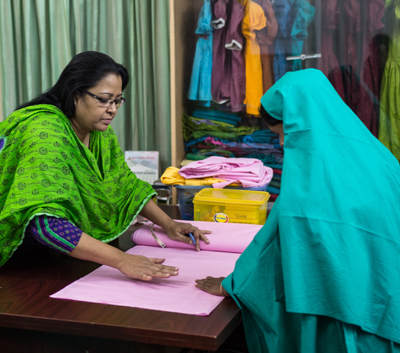

1 NO POVERTY
Goal 1.End poverty in all its forms everywhere
More than700 million people live in extreme poverty,surviving on less than$1.90 a day. Globally, there are 122 women, 25 to 34 years old, living in extreme poverty for every 100 men of the same age group.
Poor health and lack of access to education both result from poverty and help perpetuate it. Conflicts and disasters also contribute to these dire circumstances, undermining social and economic stability.
UNFPA works with governments, other UN agencies and partners to improve access to sexual and reproductive health care in developing countries, where reproductive health problems are aleading cause of ill health and deathfor women and girls of childbearing age. Reproductive health care – which includes maternal health services and family planning – enables women to protect their health and choose the number, timing and spacing of their children. This empowers them to study, work, and raise their families out of poverty.
UNFPA also works to eliminate harmful practices likechild marriage,which keep girls from school, and advocates for young people’s access to health care, skills development and jobs. Healthy, educated, employed and empowered young people improve not only their own prospects but the prospects of their community as well. Nations may realize a ‘demographic dividend’ – a boost in economic productivity – when there are growing numbers of people in the workforce relative to the number of dependents.
UNFPA also responds to the reproductive health needs of people caught in emergencies. Together, these measures help some of the world's most vulnerable people realize their rights, maintain their health, seek opportunities and reach their full potential.
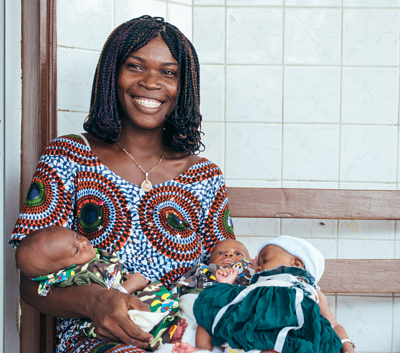

2 ZERO HUNGER
Goal 2.End hunger, achieve food security and improved nutrition and promote sustainable agriculture
The effects of hunger do not disappear after a meal is served. Chronic poor nutrition has lasting effects, and can even extend into the next generation. Pregnant women who are nutritionally depleted may face complications in pregnancy, and can pass the ill-effects of hunger onto their future children.
UNFPA trains and supportsmidwives,health workers and health systemsthat address the nutritional needs of pregnant women and girls. At antenatal visits, which are often a woman's first introduction to the health system, expectant mothers receiving counselling on proper nutrition.UNFPA-supported waiting homesalso serve nutritious meals to pregnant women while they await delivery.
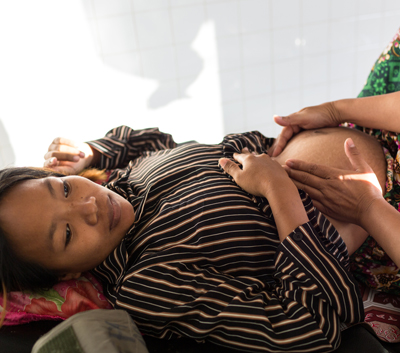

3 GOOD HEALTH AND WELL-BEING
Goal 3.Ensure healthy lives and promote well-being for all at all ages
This goal calls for achieving universal access to sexual and reproductive health care, reducing global maternal death rates, and ending the AIDS epidemic by 2030. Reproductive health problems are aleading cause of ill health and deathfor women and girls of childbearing age in developing countries.
Impoverished women suffer disproportionately from unintended pregnancies, unsafe abortion, maternal death and disability, sexually transmitted infections (STIs), and related problems. Young people are also extremely vulnerable, facing disproportionately highHIVrates as well as barriers to reproductive health information and care.
UNFPA is the lead UN agency in promoting sexual and reproductive health, includingfamily planning,comprehensive sexuality education and maternal health services. UNFPA works with partners to strengthen health systems, including through the training ofmidwives,who – when properly trained – could averttwo thirdsof maternal and neonatal deaths. UNFPA also supports theintegration of HIV-prevention and treatment programmesinto sexual and reproductive health care, so it is as readily available as possible.
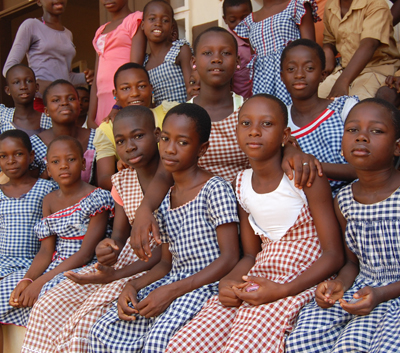

4 QUALITY EDUCATION
Goal 4.Ensure inclusive and quality education for all and promote lifelong learning
The world has achieved equality in primary education between girls and boys, but few countries have achieved that target at all levels of education. Additionally, research shows that a majority of young people lack sufficient knowledge about their sexual and reproductive health, leaving them vulnerable to sexually transmitted infections, adolescent pregnancy and a host of other concerns.
UNFPA works with governments to promote investments in education and opportunities for young people. UNFPA also supports programmes that teach literacy, numeracy, human rights and life skills to vulnerable adolescent girls, and helps to develop and implementcomprehensive sexuality education,which teaches young people about their bodies, health and disease prevention.
Equipping women and girls with the ability to choose the timing and number of their children also helps them stay in school.
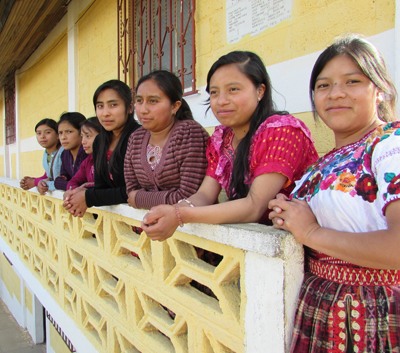

5 GENDER EQUALITY
Goal 5.Achieve gender equality and empower all women and girls
Women are muchmore likely than mento be impoverished, deprived of education and opportunities, and victimized by sexual and domesticviolence.Goal 5 calls for the elimination of all forms of violence against women and girls, the end of all forms of gender-based discrimination, and the elimination of harmful practices such as child marriage and female genital mutilation (FGM). It also calls for ensuringuniversal access to sexual and reproductive healthand reproductive rights.
UNFPA supports policies and programmes that promote gender equality at all levels – from villages and schools to whole countries. UNFPA also collaborates with partners around the world to eliminatechild marriageandFGM,practices that violate girls’ rights and perpetuate inequalities. And UNFPA works closely with partners – includingmen and boysthemselves – to fight the global epidemic ofgender-based violence.
UNFPA leads the UN’s efforts in promoting access tosexual and reproductive healthand reproductive rights, including through strengthening health systems, trainingmidwives,improving education about sexual and reproductive health, and supporting health services in many of the most deprived places on earth.
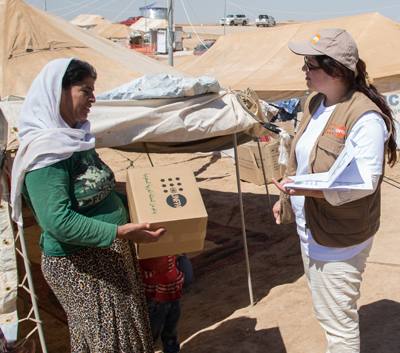

6 CLEAN WATER AND SANITATION
Goal 6.Ensure access to water and sanitation for all
Each year,hundreds of thousands of people die– and many more are sickened – from diseases associated with poor water, sanitation and hygiene. These needs can be especially acute in emergencies, where the specific hygiene needs of women and girls are often overlooked.
UNFPA distributes 'dignity kits' in disaster- and conflict-affected communities. These kits contain menstrual pads, soap, underwear, and other essential supplies to help women and girls maintain their health, hygiene and sense of dignity, even under grave circumstances.
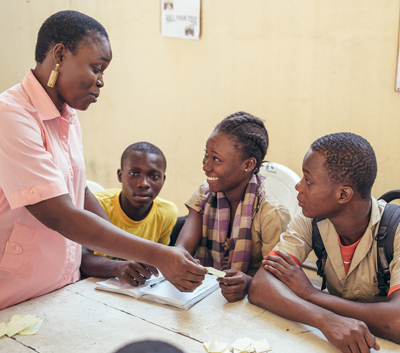

8 DECENT work and economic growth
Goal 8.Promote inclusive and sustainable economic growth, employment and decent work for all
Around the world, young people are struggling under a lack of decent work opportunities and insufficient investments. Yet the potential of this generation of youth is unprecedented: There are more young people in the world than ever before. Coupled with declining fertility rates in many parts of the world, many developing countries have a rare opportunity to recognize a ‘demographic dividend’ – aboost in economic productivitythat occurs when there are growing numbers of people in the workforce relative to the number of dependents..
But to make themost of this opportunity,countries must encourage decent employment, invest in education, and ensure access to adequate nutrition and health services, including sexual and reproductive health care. UNFPA is working with partners, including civil society, communities and governments, to encourage policies that can help countries realize a demographic dividend.
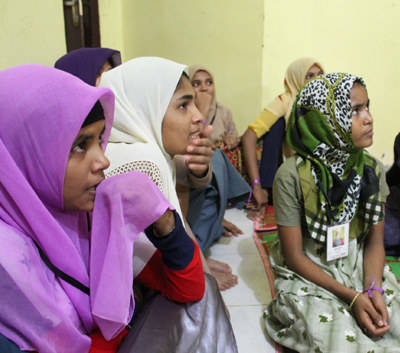

10 Reduced inequalities
Goal 10.Reduce inequality within and among countries
Economic growth will not be sufficient to reduce poverty if it is not inclusive. Yet globally inequality has proved to be persistent. This includes not only economic inequality, but also large disparities in people’s access to health and education services. Women are more likely than men to live below 50 per cent of the median income, for instance. And women in rural areas are up to threetimes more likely to diewhile giving birth than women living in urban centers.
UNFPA works to reach marginalized people and communities, especially those who have been left behind by economic growth and development. This includes vulnerable women and girls, those living with disabilities and indigenous communities. UNFPA’s efforts include extending health services to those out of reach, supporting programmes that promote gender equality, advocating for an end to gender-based discrimination and violence, and addressing theneedsof vulnerablemigrants.


11 Sustainable Cities And Communities
Goal 11.Make cities inclusive, safe, resilient and sustainable
Half the global population lives in cities, and the numbers of urban residents are only growing. Cities offer the promise of education, jobs, and health and social services, yet too many people are unable to access these benefits. Many urban residents live in slums and contend with extreme poverty and exclusion.
UNFPA works with partners to promote inclusiveurbanization,including by improving access to health care and opportunities in urbanslums.UNFPA also advocates for thewelfareand sustainability of urbanizing communities, and helps gather data about their needs.
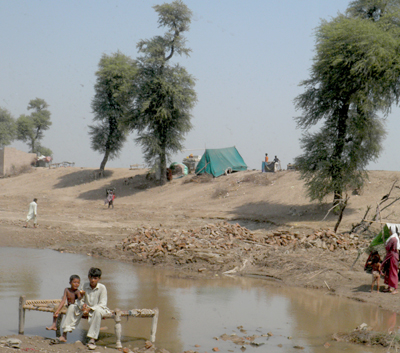

13 Climate Action
Goal 13.Take urgent action to combat climate change and its impacts
Climate changeaffects every country in the world – from extreme weather events and changing weather patterns to the rising sea level and disrupted national economies. These effects will only grow worse with time. Urgent action is needed to reduce greenhouse gas emissions and to mitigate and adapt to climate change's impacts.
UNFPA is working with governments to better understand how population dynamics affect the changing climate and how people can become resilience in the face of these changes. With partners, UNFPA has developed Demographic Exploration for Climate Adaptation (DECA), which helps policymakers see where vulnerable populations are and what hazards they might face. This information can form thebasis of policies for planningmore sustainable infrastructure and reducing disaster risks.
UNFPA also helps address thehumanitarian consequencesof climate change.
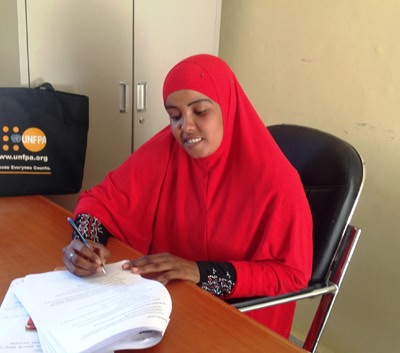

16 Peace, Justice And Strong Institutions
Goal 16.Promote just, peaceful and inclusive societies
Justice and the rule of law are essential for development, yet for too many people, justice is out of reach. Sexual violence continues toplague many countries around the world,with under-reporting and lack of data aggravating the problem. This is especially true in emergency situations, where people’s vulnerability to violence – including sexual violence – increases.
UNFPA helps to strengthen policies and services for survivors of violence. For instance, UNFPAworks with police and judgesin many countries tostrengthen servicesforsurvivors of gender-based violenceand to improve women’s and girls’ access to justice.
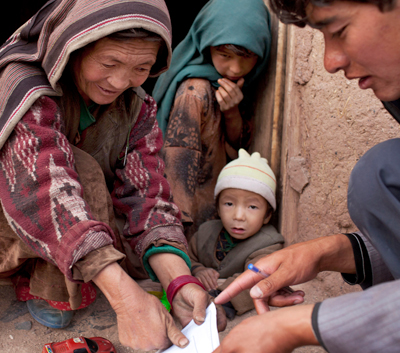

17 Partnerships For the Goals
Goal 17.Revitalize the global partnership for sustainable development
Achieving the Sustainable Development Goals will require partnerships between governments, the private sector and civil society. These partnerships must be built on a shared vision and understanding of the world. Goal 17 calls for increasing “the availability of high-quality, timely and reliable data.”
UNFPApartners with global actorsaround the world, including businesses, academic institutions, governments and local-level implementing organizations. Such partnerships have yielded more than1,000 commitmentsto enact concrete change over the next decade, as well asbillions of dollarsdedicated to advancing these goals. UNFPA also plays a key role in supportingcensuses,demographic and health surveys, and other large-scaledata-gathering exercises,and provides technical support for the analysis and dissemination of the information generated.
For more on the sustainable development goals, visit theUN SDGs website.
*UNFPA's work is based on theProgramme of Actionof the 1994 CairoInternational Conference on Population and Development.
- Updated on 21 November 2022













